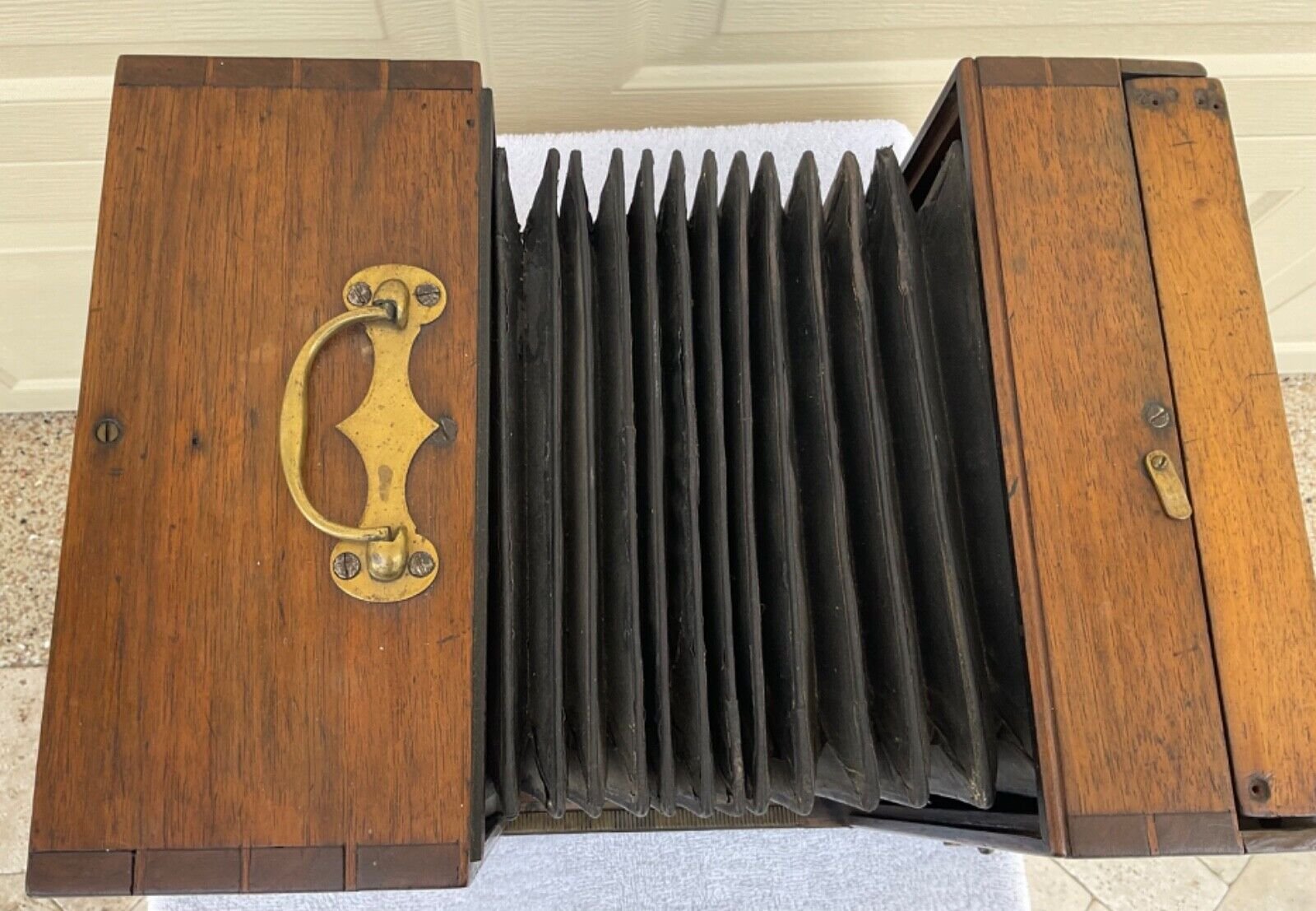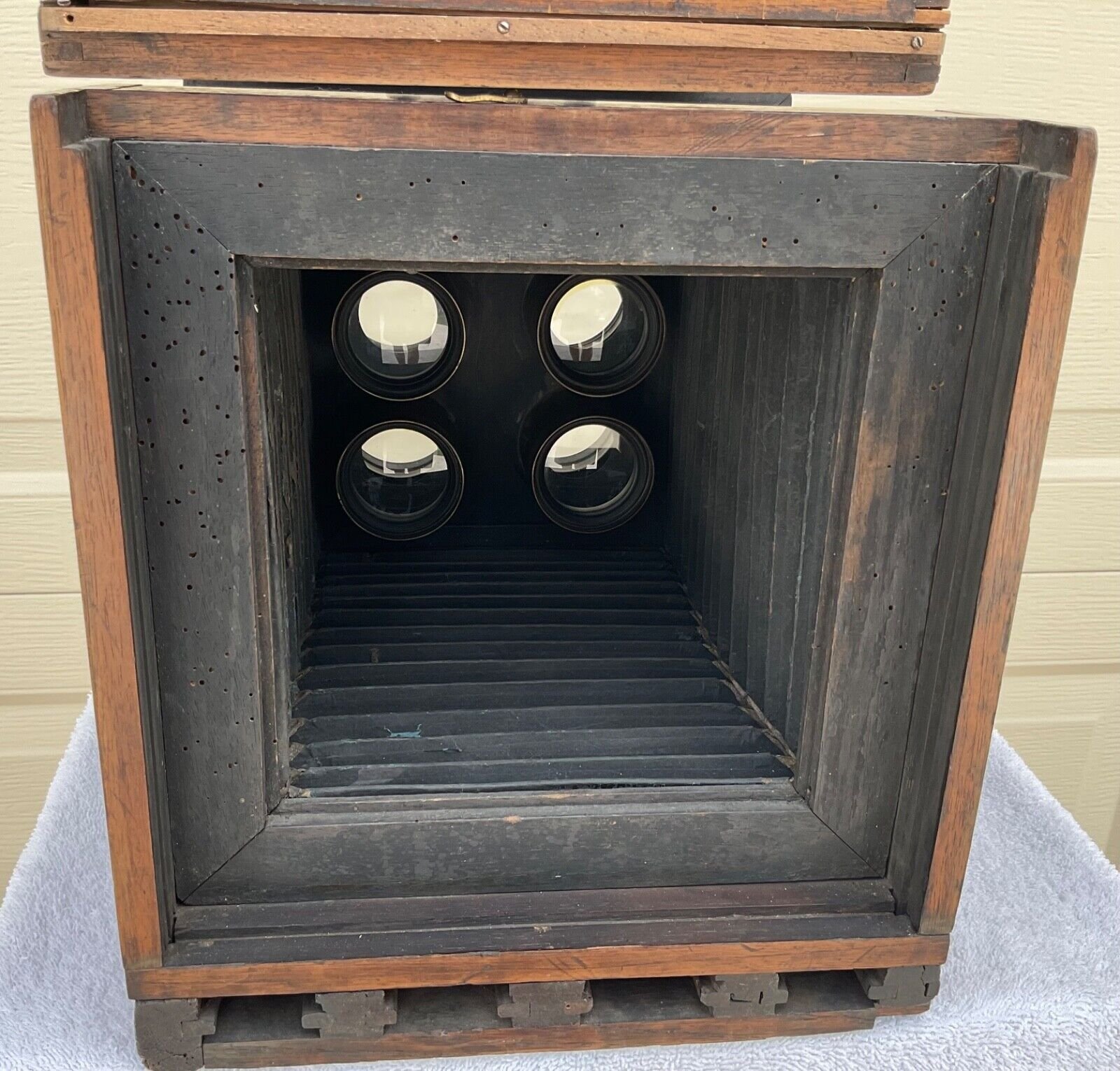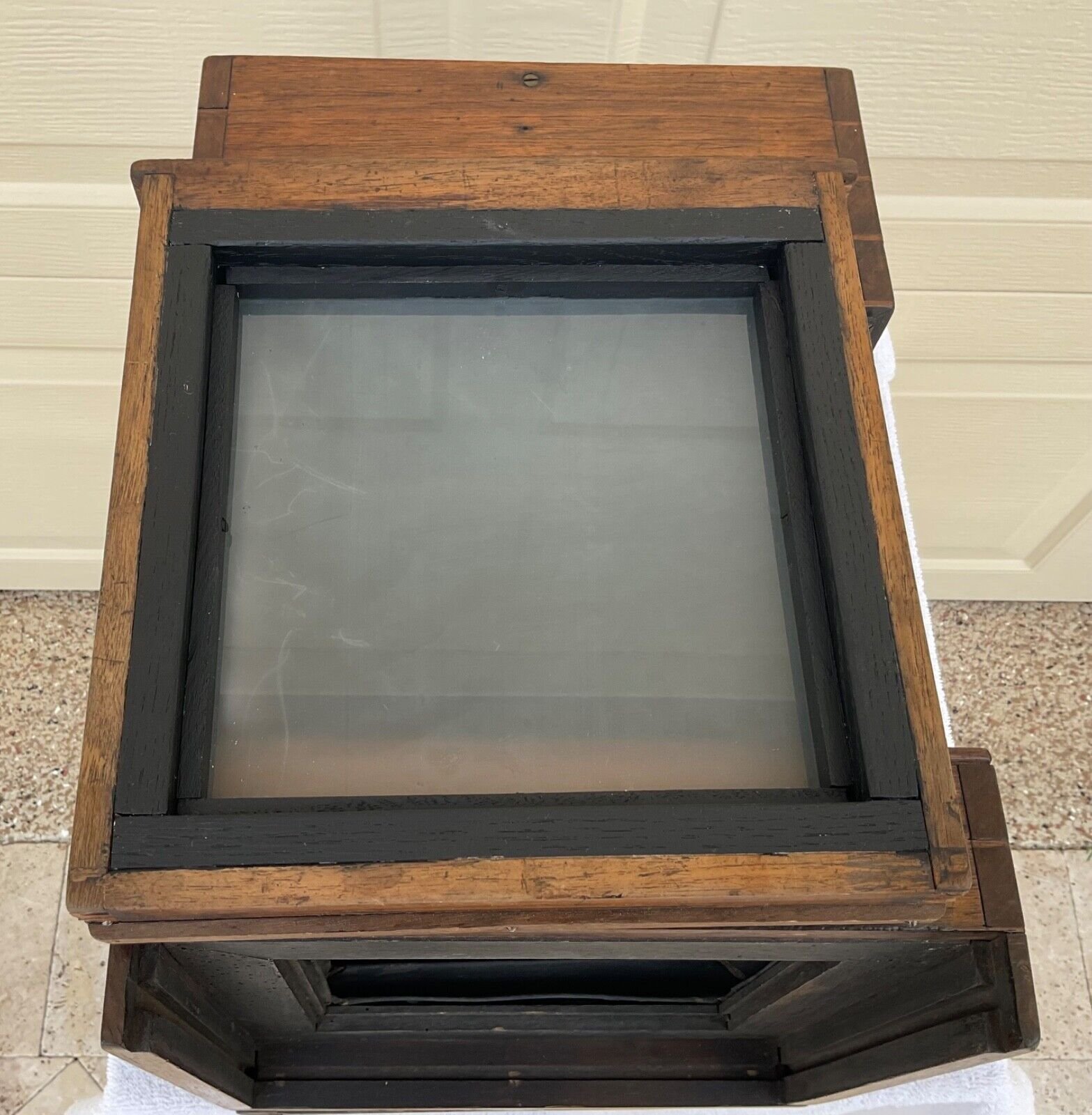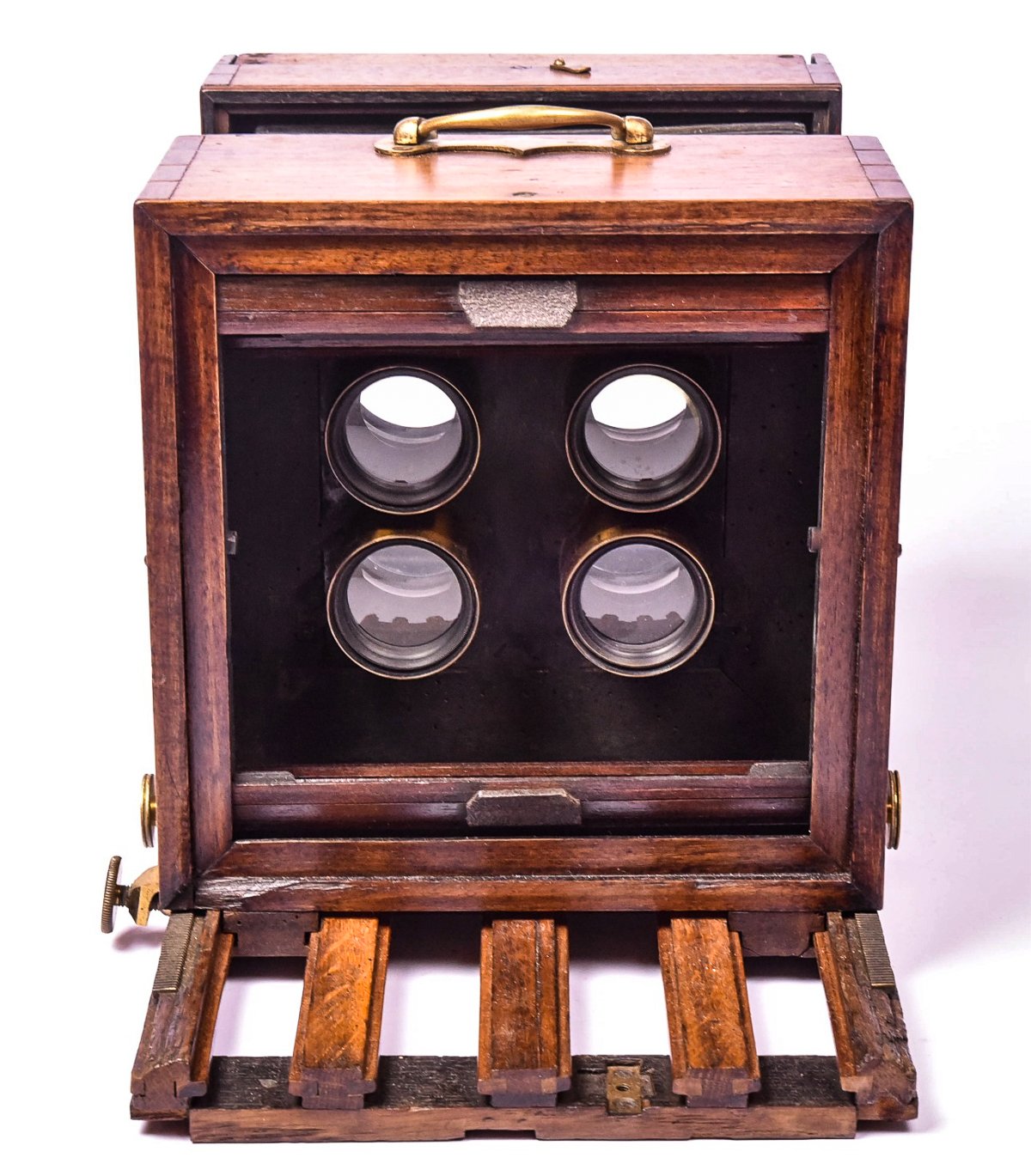Four-Lens Carte-de-Visite Camera
France
ca. 1860
This is a fine example of a French carte-de-visite camera used by studio photographers from around 1860 to 1885. This carte-de-visite camera has four identical Darlot lenses, which resulted in four identical images on the negative. This allowed photographers to rapidly create multiple copies of the same quality image.
Fine construction in old walnut, with traditional dovetail joints. Typical collodion era bellows. There are 2 doors on the sides of the front section. Focusing is by rack and pinion using knobs. The 4 Portrait Petzval type lenses, signed Darlot, are fixed to an internal panel. The shutter comprises 2 sliding wood Tambour curtains that close the opening on the front of the camera. Very hard to find camera that is important in the history of the evolution of photography.
The carte-de-visite portrait format was patented by André Adolphe-Eugène Disdéri in 1854. It provided people of modest means the ability to afford portraits of loved ones. Social use of the carte-de-viste camera was mainly confined to people who utilized calling cards in business and/or for social occasions. The carte-de-visite cameras show the fundamental shift in photographic technology that changed the nature of portraiture and popularized photography.











